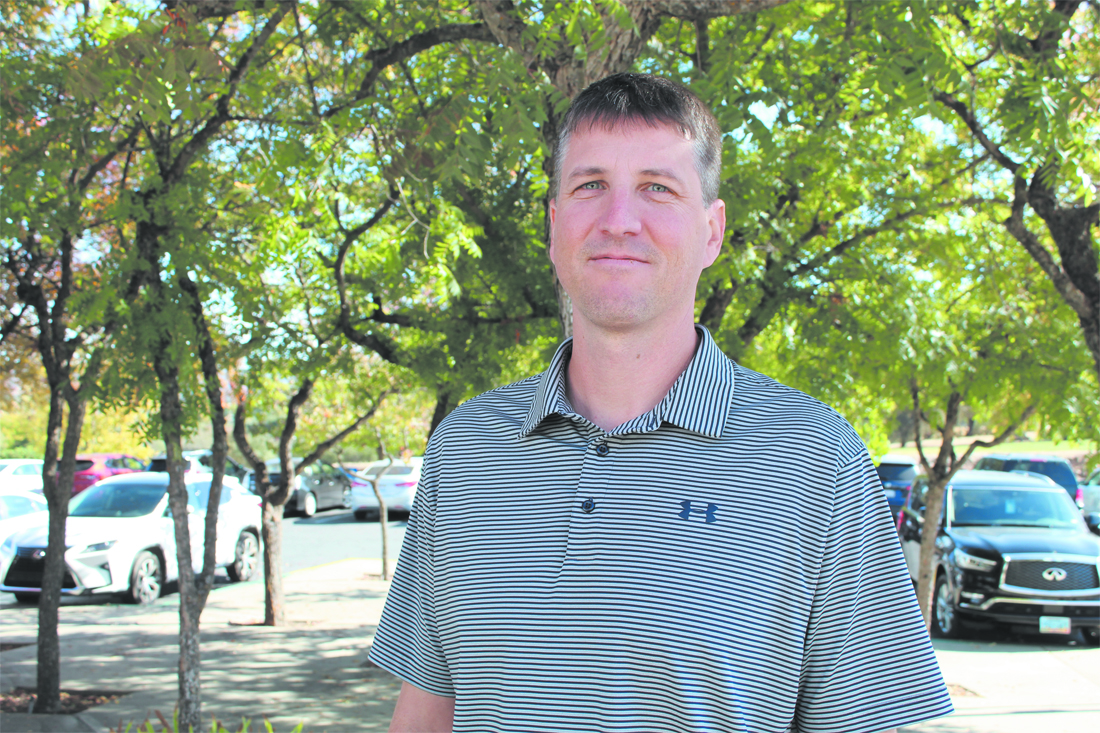
Photo by Ashiah Scharaga
Kevin Phillips, general manager of Paradise Irrigation District, updated residents on the status of the water in town—half of the lines serving standing homes have been tested; the rest is estimated to be finished by spring.
For people living in Paradise, having safe drinking water is a big deal. After all, many residents have been told since December to avoid their taps. While the Paradise Irrigation District (PID) has tested half of its distribution lines to standing structures—and cleared 38 percent of those—home and business owners have been left to test their faucets on their own.
The looming question: Is home plumbing contaminated? The answer, delivered Monday night (Nov. 18) by Gina Solomon, a clinical professor in the division of occupational and environmental medicine at UC San Francisco: Not terribly.
Solomon was speaking at a PID community meeting at the Paradise Alliance Church. She explained that she’d begun her research—funded by the National Institute of Environmental Health Sciences—in September and preliminary results showed minimal contamination within standing homes.
“We found almost no benzene—that’s really reassuring overall,” she said. “We did find disinfection byproducts—that’s not a surprise, that’s OK. That’s what happens when you chlorinate drinking water. But there were a few that required follow-up.”
Solomon and her team, comprising researchers from UC Davis and the Public Health Institute, set out last month to test the water in about 10 percent of standing buildings in the burn scar. That equaled about 100 structures in the PID service area and 24 in the Del Oro Water Co. area, which includes Magalia and Paradise Pines. They cast a wide net, testing for the largest number of volatile organic compounds (VOCs) that commercial laboratories can handle.
“We’re looking for the worst-case scenarios,” Solomon said.
While benzene was found in only two samples—and at levels well below the state-mandated maximum—other chemicals were found. They included acetone, chloroform and methylene chloride. Some of those reached levels considered unsafe for drinking. Methylene chloride was found in 28 percent of the homes tested, which is notable, Solomon said.
She said she was hesitant to worry about the potability of water on the Ridge, as the chemicals found can occur naturally, but said “they’re not things to be taken lightly.” The homes where those chemicals were found will be retested, she said.
Water authorities were first alerted to the existence of benzene in the water supply in December, after testing was done based on findings of contamination following the Tubbs Fire in Santa Rosa a year prior. In that case, benzene—a known carcinogen—was determined to have leached into the water system after plastic pipes and meters melted. The same was true for the Camp Fire, only on a much larger scale.
Since December, PID has been testing its system and either declaring portions clear of contamination or replacing the pipes. Once a service lateral—the pipe that goes from the main line to customers’ meters—is cleared, homeowners get a letter letting them know their water is safe to drink, explained Kevin Phillips, PID general manager. He expects to complete testing for areas serving standing structures by next spring.
Most of the concerns voiced during Monday’s meeting were focused on the timeline for testing—when will my neighborhood be cleared? It’s being done on a priority basis, with occupied homes at the top of the list, said Sami Kader, representing Waterworks Engineers. But PID is responsible only for the plumbing leading up to the water meter, which has left some residents unsure about the safety of their water inside their home. That’s where Solomon’s team came in, with backing from an emergency grant for $275,000 from the National Institute of Environmental Health Sciences.
“Our aim was to test drinking water at the tap,” Solomon explained. “We’re also trying to learn some lessons that might be helpful in the case of other fires in the future.”
In addition to testing standing homes and businesses to determine the extent of indoor plumbing contamination, Solomon and her team are hoping to help pinpoint the source of the contamination. While it’s believed to be linked to plastic piping, the science is still new—is it the piping itself or is it the smoke and debris that flowed through the pipes? Is there some link to galvanized pipes that would increase the chances of contamination, because PID’s service area contains more galvanized piping than Del Oro’s, and PID’s system appears to have more contamination? Those questions remain to be answered, Solomon said.
The first round of samples were taken last month, with a second round taken this week. Results from those tests are expected before Christmas, Solomon said.
